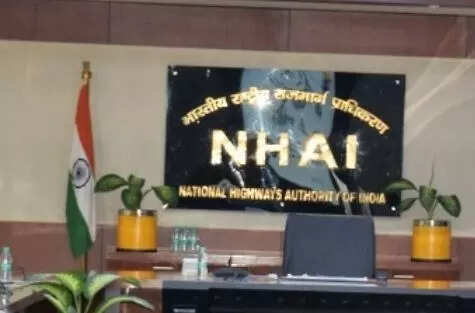
The National Highways Authority of India (NHAI) has drawn up a plan to pare its debt, which stood at INR 3.43 lakh crore at the end of March, through a mix of asset monetisation and improved toll income, officials said.
The NHAI did not borrow in 2022-23 after its budgetary allocation was raised to INR 1.42 lakh crore and it was stopped from raising more debt. The highways builder has not borrowed in 2023-24 either, when it has been allocated Rs 1.62 lakh crore in the Union budget.
NHAI officials played down concerns over the large debt saying the authority’s income from various sources can be used to repay debt. “NHAI has enough resources to repay the debt. It has been decided that investment in highways will be met from budgetary support while toll income and asset monetisation proceeds would be used to payback debt,” a senior NHAI official told ET on condition of anonymity.
As per internal projections, the NHAI’s annual payout to service debt will steadily surpass INR 62,000 crore in 2028-29 from around INR 33,000 crore in 2023-24. Its dues are expected to taper subsequently and completely extinguish by 2049-50, if no fresh debt is raised by the authority.
“The NHAI’s tolling income, from its own projects, has jumped over three times from 2018-19 levels, and reached Rs 16,587.18 crore in 2022-23. This is on the back of more roads under tolling, rising 1.5 times during the same period to 27,820.08 km in 2022-23,” a second NHAI official said, adding that another 5,000 km of roads are projected to be added in this financial year, taking toll income to Rs 22,000 crore.
“Toll income will rise by around 10% annually for the coming decade,” said the first official.
The balance fund requirement will come from a mix of asset monetisation and securitisation. Plans to raise Rs 60,000 crore through securitisation of four prominent under-construction roads are already underway.
Another 46 stretches have been identified for asset monetisation models such as toll, operate, transfer (TOT) over the next ten years.
The NHAI is also planning to raise funds using the infrastructure investment trust (InvIT) route. Two rounds of fundraising using this mode have been successful. “Preparation of InVIT round three is in advanced stages,” said the official.
The NHAI’s debt had surged due to increased focus on the engineering, procurement, construction (EPC), and hybrid annuity model (HAM) contracts from 2014 onwards as private sector appetite for the riskier build, operate, transfer (BOT) projects interest waned.

